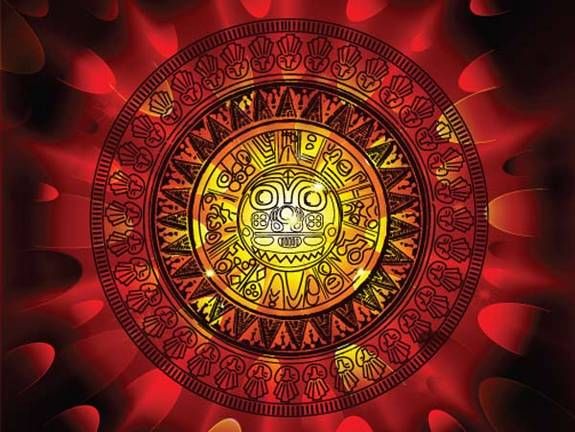Real Mayan Apocalypse May Have Been Their Own Fault

SAN FRANCISCO — For generations, the Maya thrived in an advanced, complex civilization in modern-day Central America. But then their society collapsed in the eighth and ninth centuries. Now, a new study finds that the Maya may have had a hand in their own apocalypse.
Deforestation in Central America before Europeans arrived contributed to drought in the region, according to the research presented today (Dec. 5) here at the annual meeting of the American Geophysical Union (AGU). Researchers have long suspected that drought contributed to the demise of Mayan civilization, though other factors such as conflicts and overpopulation may have also hastened the Maya's doom.
Using new reconstructions of vegetation stretching back 2,000 years, NASA Goddard Institute for Space Studies climatologist Benjamin Cook and colleagues found that forest-clearing by Mayan farmers worsened drought conditions in the area.
In fact, past research has shown similarly that the ancient South American Nazca civilization (known for large geoglyphs called Nazca lines) may have caused its own demise by clear-cutting large swaths of forest.
In the case of the Mayans, how did relatively primitive farmers manage to affect the weather? When the Mayans cleared forests, they exposed land surface with a higher albedo, or reflectivity, than the dark-green forest canopy. This land surface reflected energy back into the atmosphere rather than absorbing it, lessening the amount of energy on the land surface available to do things like convect water vapor to form clouds and thus rain. The result, Cook said, was a decline in precipitation by 10 percent to 20 percent.
With less rain, the soil dried out, so any extra energy went to warming the surface rather than evaporating water. The result was a rise in surface temperature by 0.9 degrees Fahrenheit (0.5 degrees Celsius). The lack of rainfall and boost in heat would have been bad news for a society whose survival depended on their farmlands.
Cook and his colleagues compared vegetation cover during pre-Columbian years (before A.D.1492) and then after the Europeans' arrival. The fallout from the European invasion destroyed the population by up to 90 percent in areas, and the result was a re-growth of forest as human pressures were reduced. Cave records confirm the pattern of drying during deforested periods and more precipitation when forests bounced back.
Sign up for the Live Science daily newsletter now
Get the world’s most fascinating discoveries delivered straight to your inbox.
According to Cook, an examination of these records suggests that deforestation contributed to about half of the drought experienced by the Mayans. Rainfall levels declined by as much as 20 percent over the Yucatan between A.D. 800 and A.D. 950.
"I wouldn't argue that deforestation causes drought or that it's entirely responsible for the decline of the Maya, but our results do show that deforestation can bias the climate toward drought and that about half of the dryness in the pre-Colonial period was the result of deforestation," Cook said.
Today, the fate of the Maya is again of interest, given rumors of a 2012 "apocalypse" predicted in Mayan calendars. Maya experts say that these rumors are wrong-headed and that the Mayan people would have thought of the calendar re-starting on that date, rather than the world ending. [11 Failed Doomsday Predictions]
More pressingly, deforestation is once again rampant in Central America, Cook told an audience at the AGU meeting: "We could see these sorts of things happen again."
You can follow LiveScience senior writer Stephanie Pappas on Twitter @sipappas. Follow LiveScience for the latest in science news and discoveries on Twitter @livescience and on Facebook.

Stephanie Pappas is a contributing writer for Live Science, covering topics ranging from geoscience to archaeology to the human brain and behavior. She was previously a senior writer for Live Science but is now a freelancer based in Denver, Colorado, and regularly contributes to Scientific American and The Monitor, the monthly magazine of the American Psychological Association. Stephanie received a bachelor's degree in psychology from the University of South Carolina and a graduate certificate in science communication from the University of California, Santa Cruz.
Most Popular

